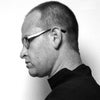This is Selknam Magic Stone, one of the objects in Elisa Pritzker’s current exhibition Selknam: Spirit, Ceremony, Selves, at The Hudson Valley Center for Contemporary Art Museum:
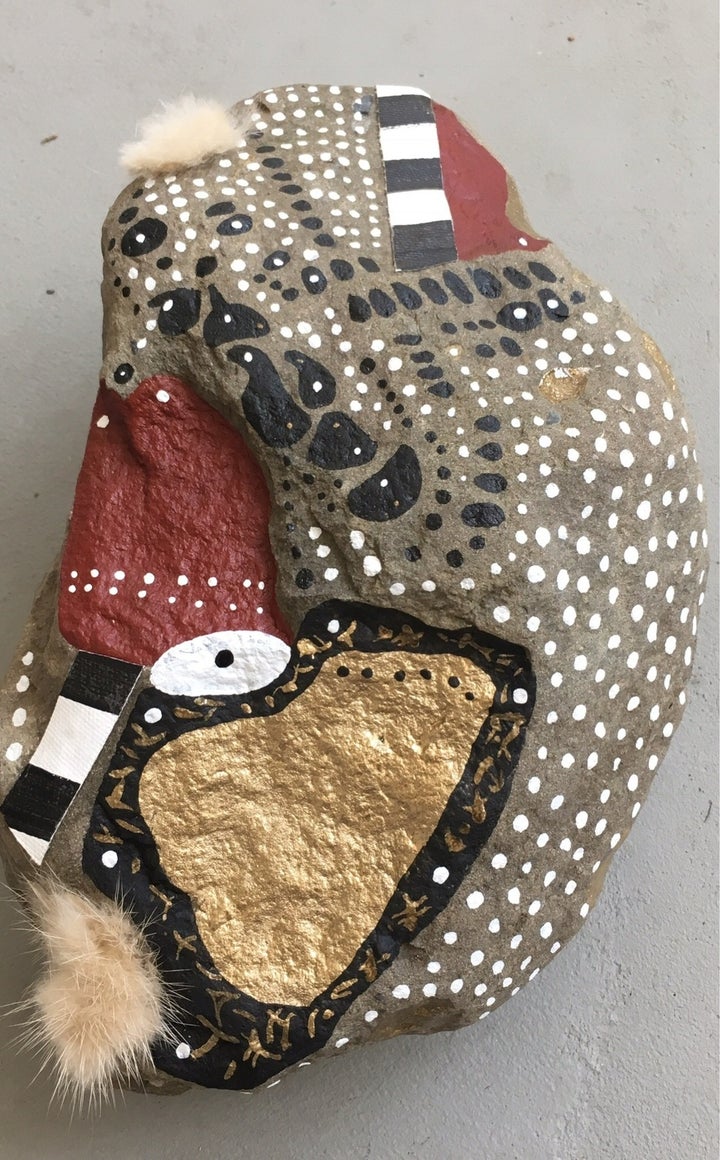
Selknam Magic Stone, 2017acrylic paint, gold, fur, canvas, 13x8x3 inches
I’ve been thinking about Pritzker’s Selknam work for several years now, and I have some things to say about it. I generally try to take a defensible and empirical approach when I write about art – to point out things in artwork that anyone could see, if they looked for it, and explain what those things mean to me. But I need to take a more subjective approach with Pritzker’s pieces. So let me explain a bit where I’m coming from on this.
Many years ago, unsatisfied with my drawings of live models, I decided to follow the path of Da Vinci and Michelangelo and learn to draw living people by dissecting dead ones. So I signed up for gross anatomy at Santa Monica College, which met on Mondays and Wednesdays during the semester in question. The first class was Monday, September 10th, 2001. The second was Wednesday the 12th. We put the radio on during dissection.
I think many Americans who were not personally there on September 11th needed to create their own September 11th, somehow. It was a question of honoring our dead, of setting them to rest properly. For me, it took the form of dissecting cadavers and drawing an anatomical atlas from it, a project which stretched on for two years. I thought of this as going down into the city of the dead.
At some point, I realized I was entertaining a vague thought that if I searched deep enough in this freezing flesh, I would figure out where the soul was. I dug all the way down to the base of the skull, and I saw many fascinating things between here and there. But I did not see the soul.
This anecdote replicates, in a strange form, the enigma of how humans handle the dead. We do it with great ceremony and reverence, investing many resources in it. At this late point in our culture, sometimes we say, “Who is this for?” and, with some embarrassment, we answer, “It is for the living, not the dead. The dead don’t care anymore.” We are embarrassed because this answer is a lie. It is not for the living only. It is also for the dead. We do not like to admit it, but we believe that how we treat the dead matters to them.
How does it matter exactly? This is the wrong question. Let me offer you a profound thought from Frederick Pohl’s 1972 novella The Gold at the Starbow’s End. In this part of the story, some astronauts trapped on a doomed spaceship have decided that throwing yarrow stalks isn’t working well enough for their investigation of the I Ching, so they all cut off their little toes, to obtain proper bones for the job. They explain themselves:
[A person] might say, “Well, what’s the difference?” That’s a poor sort of question to ask. … A better question is, “Does it make a difference?”
Do you see what Pohl is getting at? If you ask “What’s the difference?” and you can’t nail down any particular answer, you will tend to answer, “There’s no difference.” But if you ask the very open-ended “Does it make a difference?” then you do not burden yourself with identifying the difference right away. It becomes much easier to admit that the answer is “Yes.”
We treat the dead with respect and dignity because we believe it makes a difference to them, even if we can’t say what the difference is.
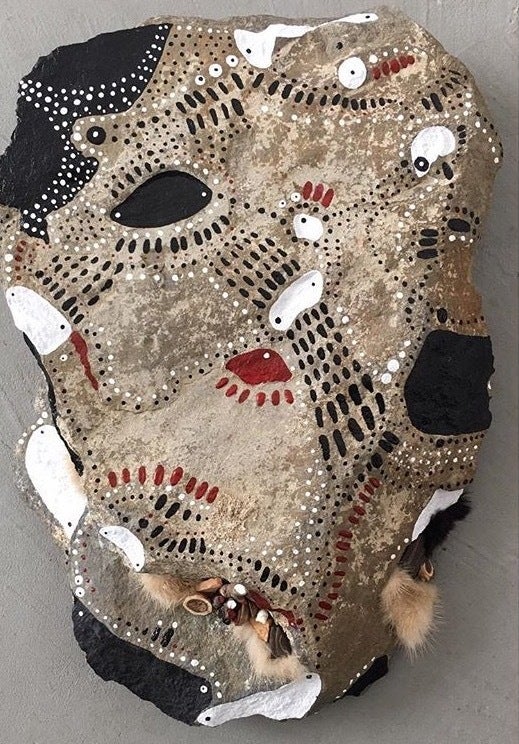
Selknam Magic Stone, 2017acrylic paint, fur, natural objects, 17x9x3 inches
The Selknam were an indigenous people of the Tierra del Fuego archipelago, where America stretches south to nearly touch Antarctica. The Selknam are extinct now. They didn’t vanish early in the confrontation of Europe and the New World. They are not lost in the mists of time. There are plenty of photographs of them, and people who remember them. The last one died in 1974. They were here until recently. But now they are gone.
Argentina owns part of Tierra del Fuego, and Pritzker is from Argentina, so she came across their story and their artifacts while traveling in her own country.
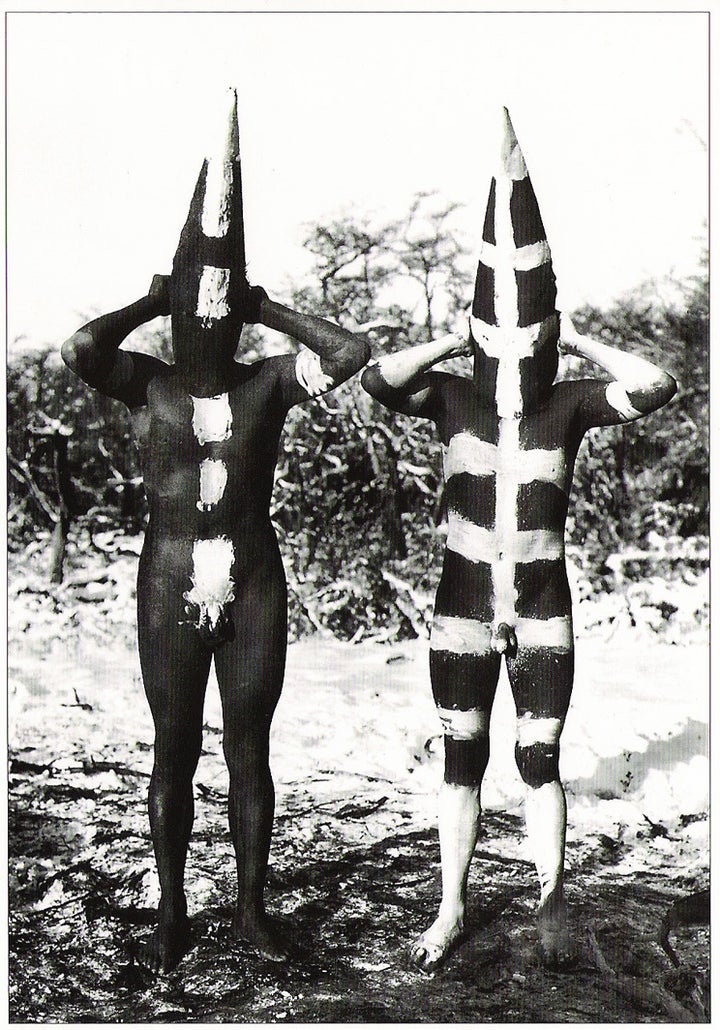
Selknam in ceremonial body paint, photograph Martin Gusinde, 1923
As all lucky artists are one day seized by an idea, Pritzker was seized by the traces of the Selknam. Their artistic vocabulary spoke to her, and more than their vocabulary, the outlook it implied on human life, nature, and the world spoke to her. She had sculpted in various eccentric materials before – found wood, bones, underwear, zippers – but it appears that the Selknam culture, a nomadic hunter culture with active participation by shamans and spirits, consumed her and redefined her work and goals. She began to make Selknam objects.
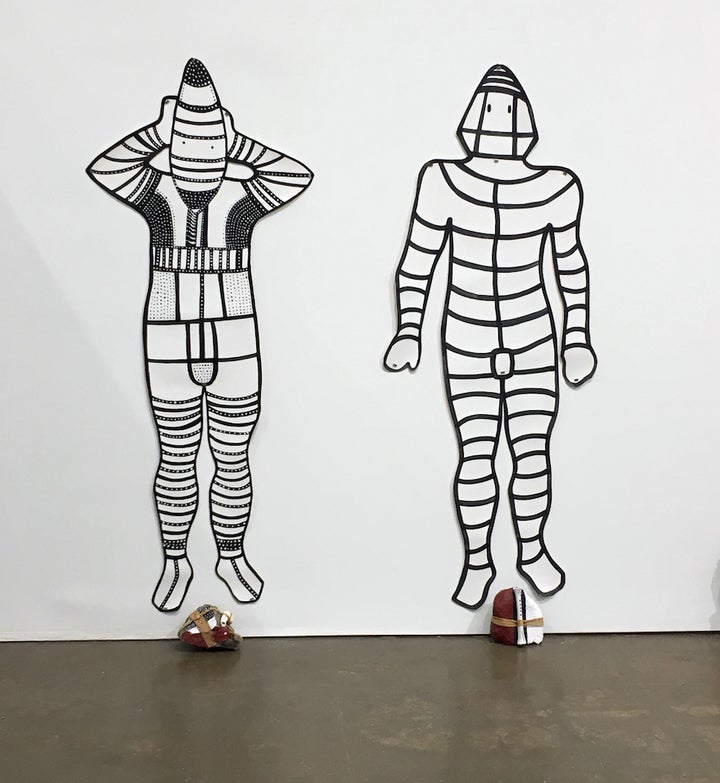
Shoort and Ulen Shamans, 2017, acrylic paint on canvas / life size silhouettes
This is why her work reminded me of my descent into the city of the dead. Pritzker has found her own dead, and has gone down into their city. In this city, she has discovered a living, active principle. Working from this principle, she has begun to speak for these people who can no longer speak for themselves. What she is doing should technically be called mourning, but it feels like celebration; and there is no reason why one act cannot contain both.
But it raises many questions that cannot be answered. What difference does her work make to the dead? None at all, we suspect. And yet Pohl tells us this is the wrong question. Rather: does her work make a difference to the dead? Well… it is difficult to assert that it cannot. From another angle: do the dead live again in her? Is her work Selknam in character, or does it merely quote from their visual repertoire, while meaning something utterly different? This question too is irresolvable. Pritzker might think she knows. But we cannot be sure. And there are no Selknam to ask, nor might they be qualified to say. Pritzker’s work exists squarely in that flickering region where no two human beings can be sure that they are communicating.
There is a categorical ambiguity to almost everything about Pritzker’s Selknam work. This gives it a richness, a philosophical resonance, which is what conceptual art strives for and rarely reaches. But this is not why I am so moved by it.
For me it is much simpler than that. As I said, my response to this work is subjective. To my eye, Pritzker has crossed a gulf, has through the miracle of inspiration been permitted to behold what was lost. In the city of death, the living principle filled her with life. She let go of the hesitations, falsehoods, and errors of artwork that emerges from reason and ego. She stepped out of the world of seeming and representing, and entered a world of doing and being. As the Selknam inhabited their land and air, so Pritzker has found in them a way to live unseparated from herself and from the world. The Selknam world she has found is numinous and overwhelming. It speaks to her, and she records what it says with a sure hand, in stone and quasi-linguistic marks. Her world is not every world; the Selknam shaman is not every shaman. There is a specific weird texture to the Selknam take on things, a spooky majesty to their set of symbols and images. And this sensibility, like a spark, leapt across the gulf from the dead to the living, and flowered again in Pritzker’s work.
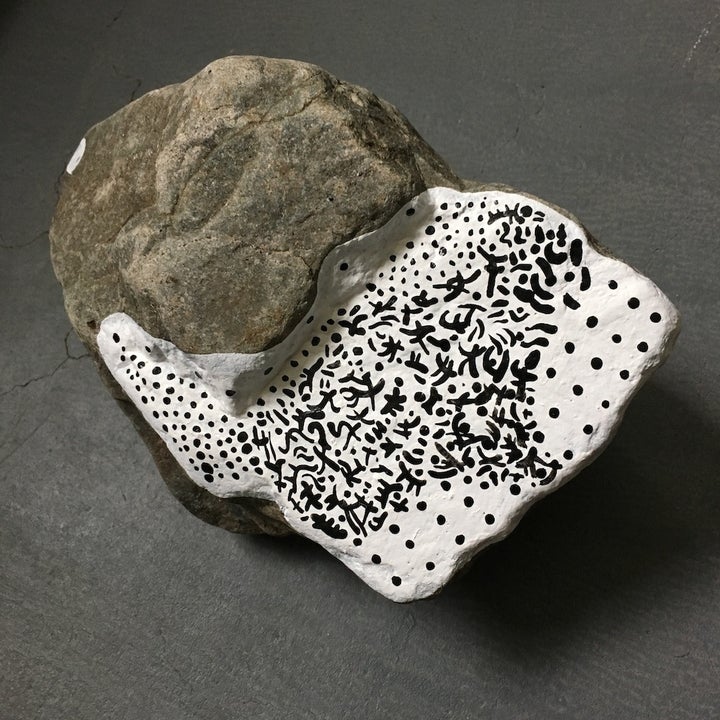
Selknam Magic Stone, 2017, acrylic paint, 8x4x6 inches
To me these are ontological objects, thick with magic: the ambiguity of their meaning is interesting, but more profound is their testimony of communion between the living and the dead, of fellowship in understanding of the nature of the world. They are fierce objects. They emerge from grief, and end in hope.
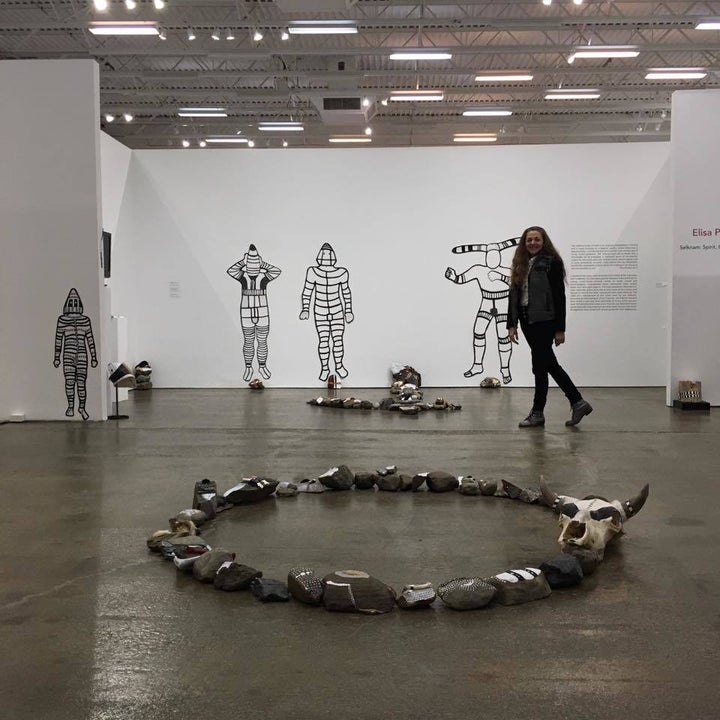
Installation View, Selknam: Spirit, Ceremony, Selves, 2017, Elisa Pritzker, at The Hudson Valley Center for Contemporary Art Museum
Elisa Pritzker: “Selknam: Spirit, Ceremony, Selves”
The Hudson Valley Center for Contemporary Art Museum, May 13 – September 30, 2017 1701 Main Street, Peekskill, NY, 10566, (914) 788-0100. For more information visit www.hvcca.org and for Elisa Pritzker visit www.elisapritzker.com
Gallery talk with the artist, Sunday Sept. 24th, 2pm: “Selknam: look back to look forward”
